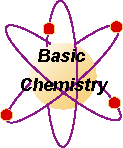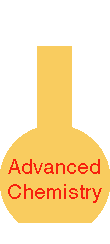Kinetics
PURPOSE:
In this lab we will observe exothermic and endothermic reactions and determine if they are spontaneous at room temperature
Teacher Demonstration
In the hood with the fan on is placed 3 grams of potassium permanganate on each (2) glass squares. Make a cavity in the center of the solid. One ml of cold glycerol is added to one pile of potassium permanganate. One ml of warm glycerol is added to the other pile of potassium permanganate. Observe the reactions and note the products.The second demonstration involves damp sugar again under the hood with the fan on. Make a cavity in the center of the sugar. Pour in concentrated sulfuric acid. Observe the reactions and note the products.
Record your observations of these reactions regarding heat and products formed.
Student Procedure
-
Read the MSDS sheets for safety precautions and disposal of chemicals.
Conclusion:
- Determine the number of calories absorbed or given off by each of your reactions and tell if they are endothermic or exothermic.
- For reaction #3 tell how many moles of water were formed after showing the balanced equation.
calories = ml X temperature change
- Discuss your observations of the teacher demonstration.


